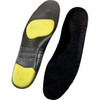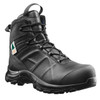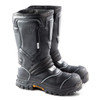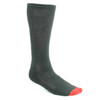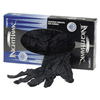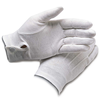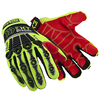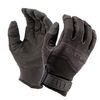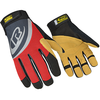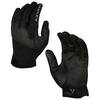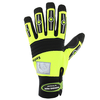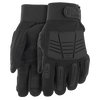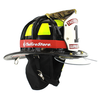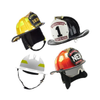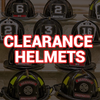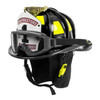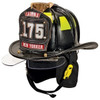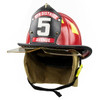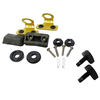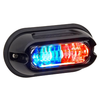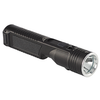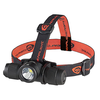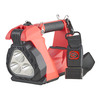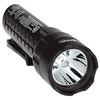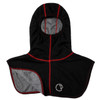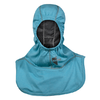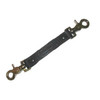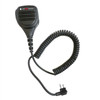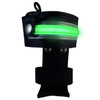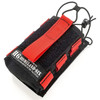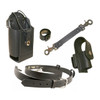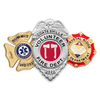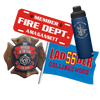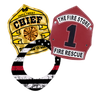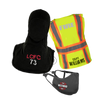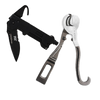WHAT YOU NEED TO KNOW ABOUT STRUCTURAL FIREFIGHTING GLOVES AND NFPA 1971
Posted by Robert Avsec on Mar 25th 2024
By Robert Avsec for FireRescueOne BrandFocus
Firefighting gloves must provide a good fit, dexterity, protection from physical hazards (e.g., sharp edges or rough surfaces) as well as protection from flame and heat. Meeting such diverse requirements has proven to be one of the most challenging obstacles that glove manufacturers face. However, one example of a manufacturer that has exceeded these requirements would be TechTrade’s Pro-Tech 8 gloves. In this article we’ll look at changes applicable to structural firefighting gloves in the recently released 2018 edition of NFPA 1971: Standard on Protective Ensembles for Structural Fire Fighting and Proximity Fire Fighting.
MOISTURE BARRIER
TechTrade added the Porelle PTFE Moisture and Blood Borne Pathogen Barrier to its entire line of :Pro-Tech 8 structural firefighting gloves—including the updated Fusion Pro, Titan Pro, Titan K Pro, and the new TPRG.NFPA 1971 now specifies that the moisture barrier of a glove is to be resistant to liquid-borne or blood-borne pathogens and shall not allow passage of the Phi-X-174 bacteriophage1 for at least one hour.
THERMAL PROTECTION
In the 2018 Edition of NFPA 1971, the performance requirement for the back of the glove has been increased. It is now to provide increased thermal protection for the when, where, and how firefighters are typically burned: the back of the hand, while clenching a tool or hoseline, and by radiant heat from a fire.
TechTrade adds an additional layer of Nomex to its unique knuckle guard system in all its Pro-Tech 8 series of gloves to provide firefighters with this added level of protection where they need it most – thus making the back of the hand better protected in the event of contact with excess heat.
A NEW STANDARD FOR GLOVE SIZING
NFPA 1971 (2018) takes a more objective perspective for glove sizing by: (1) providing guidance on how to measure a firefighter for a glove; and (2) providing a standard for glove sizing that must be used for a manufacturer’s glove to be labeled as being NFPA 1971-compliant.
The Technical Committee for NFPA 1971 developed its revisions to glove sizing using data from the report, Hand Anthropometry of U.S. Army Personnel, the final report on the findings of research done at the Army’s Natick (Mass.) Soldier Research Development and Engineering Center.
A total of 2,307 soldiers (1,003 men and 1,304 women) participated in anthropometric (the scientific study of the measurements and proportions of the human body) survey of Army personnel to provide the Army with data about the physical make-up of its warfighting force necessary for the design of uniforms, protective equipment, and workspaces.
Of particular interest to NFPA 1971’s Technical Committee was the section of the Army’s study detailing the 64 hand measurements that were obtained using a special photometric system. Through direct measurement during the Anthropometric Survey, 22 additional dimensions were added to the hand data base for a total of 86 hand dimensions for both male and female soldiers.
CHANGING THE WAY GLOVES ARE SIZED
No longer can NFPA-compliant gloves be labeled as (S), (M), (L), or (XL) or larger. Glove manufacturers must manufacture their gloves to meet the new glove sizing requirements contained in NFPA 1971. For gloves to be compliant with the standard, they must be labeled using the following sizing:

- 64N (normal)
- 64W (wide)*
- 64XW (extra wide)*
- 70N (normal)
- 70W (wide)
- 70XW (extra wide)*
- 76N (normal)
- 76W (wide)
- 76XW (extra wide)*
- 82N (normal)
- 82W (wide)
- 82XW (extra wide)*
*optional sizing
First measurement:
These sizes correlate to the findings of the Army’s study which showed the most accurate way to obtain the best glove fit is based on two measurements, the first being the length of the index finger from the tip of the finger to the base of the finger—to the nearest 1mm (1/16th-inch)--as shown in Figure 1 above.
Second measurement:
The second measurement is obtained by using a set of calipers or similar measuring device to measure the breadth of the hand to the nearest 1mm (1/16th-inch) across the metacarpals (knuckles) on the back of the hand as shown in Figure 2 below:

Third measurement:
Using the graph contained in NFPA 1971, the two measurements are plotted on the graph to find the proper glove size as shown in Figure 3.

Within each glove size there is latitude for both index finger length and hand width measurements. Also, glove manufacturers can create custom-sized gloves that fit firefighters with hands that are smaller or larger than the standard glove sizes. Those gloves must be labeled with the closest applicable size and have the word “Custom” added, e.g., 64C (Custom) or 82C (Custom).
TechTrade’s new line of Pro-Tech 8 structural firefighting gloves are Certified Compliant to NFPA 1971-2018. They provide a moisture barrier that offers enhanced chemical and viral protection while keeping your hands dry and maintaining breathability. Along with added thermal protection and a more precise fit, Pro-Tech 8 gloves have quickly emerged as the new standard in structural firefighting gloves.
1: PhiX174 is a small, icosahedral, non-tailed virus with a circular single-stranded DNA that has been used in many landmark experiments because of its small genome size (5,386 nucleotides and nonpathogenic status. Nonpathogenic organisms like PhiV174 are those that do not cause disease, harm or death to another organism and is usually used to describe bacteria).


